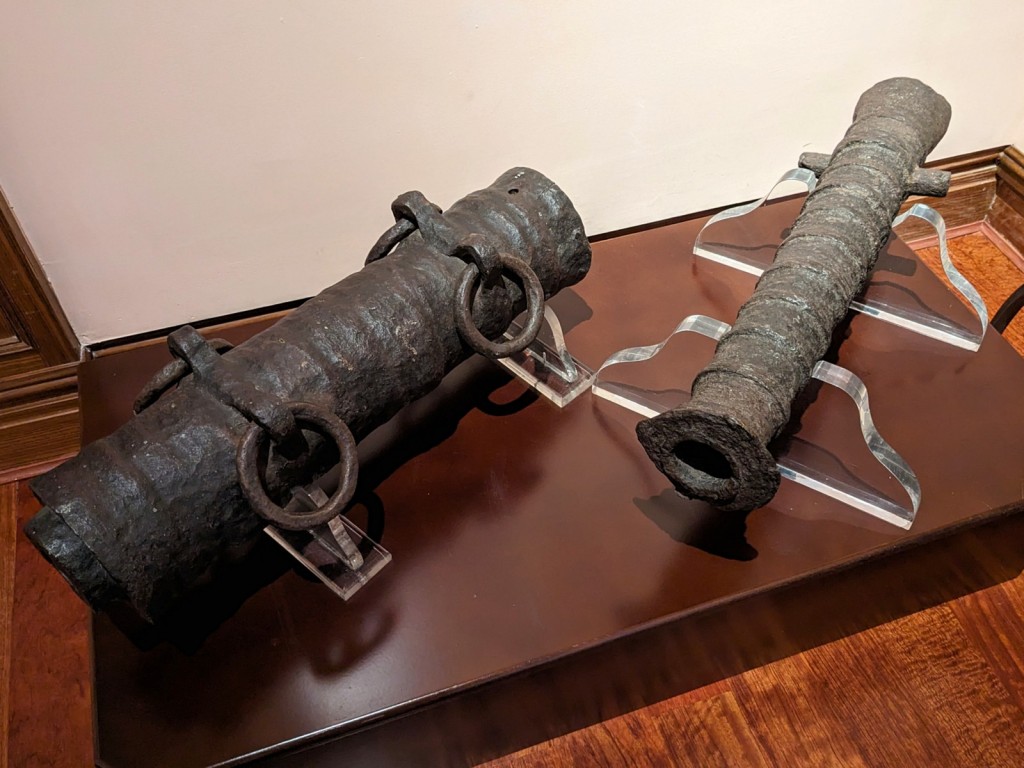
Reading this week:
- Greasy Luck by Gordon Grant
- A Working Woman by Elvira Navarro, translated by Christina MacSweeney
I have discussed before in this forum my Spanish roommate that I had during my Firstie year at the Naval Academy. His name was Francisco and he was a semester-long exchange student from the Spanish naval academy. He had been an enlisted sailor before going to the academy, and as such his lived experiences were unimaginable to me (specifically he was 29 and married). I still have fond memories of Francisco and the deep life lessons he bestowed upon me (see the linked post about sandwiches), and so in tribute to Francisco’s service in the afternoon of our first full day in Madrid my super amazing wife and I visited the Museo Naval!
If you Google the Museo Naval you will find reviews describing it has a “hidden gem” and man that is true. The entrance is unassuming and I wrote down in my journal that the foyer was “dingy.” I had greeted the nice lady at the front desk with my limited Spanish and she seemed very disappointed when I said I preferred English as she handed me a pamphlet on Jorge Juan (they had a special exhibit on him at the time). But you ascend the stairs and man WOW. It’s gotta be one of the better if not the best naval museums in the world. It is surprising how big it is as you wind through the twists and turns that reflect the twists and turns of the Spanish navy’s history. You really oughta go but if you can’t luckily it appears Google has turned it into a street view thing so you can catch a glimpse yourself.

The museum takes the prudent choice of starting at the beginning, with the early history of the Spanish navy (or I guess the Aragonian and Castilian naval forces). Apparently it took about a century between cannons being introduced to Europe in the 12th century and people thinking of putting them on ships in the 13th century, but the museum had the above examples of early 16th century shipboard artillery which is pretty neat.

Especially exciting for me was all the bits about early navigation. The collection here really was especially extraordinary. I have just talked about how much I like astrolabes (man I want an astrolabe), and the museum had them in spades. They also had all sorts of old maps, including even a huge globe dating from 1688. The crown jewel of their map collection was the Juan de la Cosa map, below. This is the oldest known map to feature America. Ole Juan there took part in Columbus’ voyages and only 8 years later in 1500 was banging out the below relatively detailed depiction of the Caribbean to demonstrate the majesty and extent of the Spanish empire. On that note, the museum is pretty laudatory and I don’t recollect them struggling to cope with the cruel nature of colonialism. They had a pretty huge painting of Columbus and a collection of Taíno artifacts to really drive home the number of people subject to the Spanish crown. However even in the midst of all this what I personally was most interested in when it came to the Juan de la Cosa map is the depiction of Africa, especially how the Nile and Congo rivers meet in a lake in the mountains of the moon, because I have my very particular interests and those interests are boats and Africa and navigation and steam power and integrated farming.




Really the sheer number of artifacts on display in the museum was overwhelming. They even had a whole section full of objects recovered from the Spanish nao San Diego, which was sunk by the Dutch in 1600 in the Philippines. A whole room choc-a-bloc with Chinese porcelain and Phillipines pots and Thai jars and man, you know, commerce! History! Boats! Stunning. And of course how could it be a naval museum without being absolutely stuffed to the brim with SHIP MODELS!!!!






After our visit to the museum my super amazing wife suggested I get into ship model building and I don’t think she knows what she is suggesting. I could become so obsessive, you don’t even know. She clearly doesn’t. But they had a whole bunch of ship models, of ships from every era and from so many locations (check out the Malaysian war boat above), and not just of ships! I just told you I love steam power and they had a whole intricate model of the turbines from España-class battleships and even (not pictured) a model of a water-powered sawmill they used to saw all the planks to build all these ships! Unclear if the model sawmill sawed model planks for the model boats.
So all in all a great museum, perhaps the best Naval Museum. Spanning centuries and full of intricate details and all sorts of information about the huge lifespan of the Spanish Navy, presented in both English and Spanish, if you are in Madrid man you gotta go. And then, I forgot to mention in the last post, after the museum we went off and got churros and chocolate, and if you are in Madrid you have to do that too. Do both. Ships, and churros. This is what is best in life.
You must be logged in to post a comment.